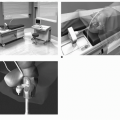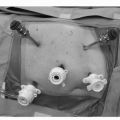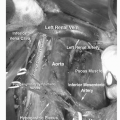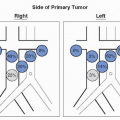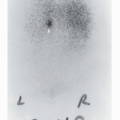While there are several techniques by which urothelial cancer can be identified, only cystoscopy provides reliable, direct visualization and localization of a bladder tumor. Cystoscopy, which remains the gold standard for the detection of bladder cancer, provides the opportunity for initial assessments of tumor grade and stage. Studies have demonstrated that an experienced urologist can distinguish high-grade from low-grade tumors as well as superficial from grossly invasive disease (
5). In general, low-grade, noninvasive tumors appear papillary, contacting the surface of the bladder on a narrow stalk. Carcinoma
in situ, a noninvasive, high-grade tumor, appears as a flat velvety lesion, arising in isolated areas or involving large regions of the urothelial lining. High-grade, invasive tumors lose their papillary configuration, frequently appearing as sessile, solid, or nodular lesions. Few studies address the utility of cystoscopy alone in the local staging of bladder cancer. Satoh et al. performed 275 cystoscopies on 165 patients in order to evaluate cystoscopic features that predict muscle invasion (
6). They found that size, stalk (sessile vs. pedunculated), and configuration (nonpapillary vs. papillary) were independent predictors of muscle invasion. Cina et al. (
7) evaluated the ability of the trained urologist to determine grade and stage of bladder cancer by cystoscopy alone, reporting a sensitivity and specificity of predicting low-grade tumor of 91% and 46%. In contrast, the sensitivity and specificity was poor for the detection of high-grade tumors, lamina propria invasion, or muscle invasion. Others have reported a similar sensitivity for the cystoscopic detection of low-grade noninvasive tumors in a select population of patients undergoing surveillance for superficial bladder cancer (
5). Several modalities are currently under investigation as adjuncts to cystoscopy for bladder cancer staging. These approaches, such as optical coherence tomography and confocal microscopy, may allow visual inspection of the extent of bladder tumor invasion (
8).



